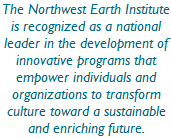 As we dive into Christmas Eve and Christmas Day, we are delighted to share a guest blog post by professional writer Isabella Woods, who offers a few tips on a green Christmas. Tuck these away for next holiday season as well! Happy Holidays to all from us at NWEI…
As we dive into Christmas Eve and Christmas Day, we are delighted to share a guest blog post by professional writer Isabella Woods, who offers a few tips on a green Christmas. Tuck these away for next holiday season as well! Happy Holidays to all from us at NWEI…
We’re Dreaming of a Green Christmas
It’s that time of year again: when the festive sweaters see the light of day again and when we all come together to celebrate this most wonderful time of the year. And just like the rest of the year, when you should be switching off lights and sleeping on organic latex mattresses, it’s a time when we can focus on sustainable solutions. In fact, there are potentially more things you can do around the holidays to save energy and help the environment than any other time of the year. You just need to know where to look. There are lots of tips you can follow to make sure that this year’s Christmas is the greenest one yet. So while we may all be dreaming of a white Christmas (or so the carol goes), here are just a few tips to make sure you have a green one too.
Go easy on the Christmas lights
They may be one of the hallmarks of the holiday season, but Christmas lights are one of the most energy-hungry forms of lighting, period – at least the traditional filament bulb versions, anyway. So to keep your environmental impact down without sacrificing the lights altogether, you can simply use fewer lights than you normally would (perhaps limit them to just the tree), or use LED lights instead. LED, or light emitting diode, lights use up to 97% less energy than their traditional counterparts, so they’re a great choice for the energy conscious Christmas lover.
Wrap your gifts in recycled paper
Each and every Christmas, four million tons of wrapping paper will be thrown into the trash. That’s a lot of trees, and a lot of waste. You can do your part to lower this figure in a couple of ways: either make doubly sure that all of your Christmas wrapping paper makes its way into the recycling bin, or buy paper from a recycled and sustainable source. This latter method has twice the benefits because the person you’re giving the gift to will surely be thrilled that their present is helping to protect the environment. Once the festivities are over, make sure you give your home a quick once-over to check for any stray paper, then get all of it into your recycling bin.
Look for ‘battery free’ gifts
We’ve all been there: surrounded by kids playing with toys that buzz and beep and whir – it’s all part and parcel of the Christmas experience. But not every toy needs to be battery operated, and in fact those that aren’t are much better for the environment. Batteries are one of those items that are near impossible to dispose of. Once they’re empty they usually end up on the rubbish dump, never to be used again. It doesn’t need to be said that this is terrible for our environment. So, to avoid adding to the number of batteries we throw away each year, why not go for battery free gifts? Stuffed toys, musical instruments, toy cars, dolls – there are plenty of options. You could even go one better and make the gifts yourself from sustainable materials.
Go for a ‘live’ Christmas tree
It may seem logical to go for a plastic Christmas tree and hence lower the number of trees that are chopped down for use at the end of the year, but this can actually be the worse option. The reason is that plastic Christmas trees, especially the cheaper ones, are often made of non-biodegradable plastics that cannot be recycled. This means that if the kids get bored of the same tree each year, it’ll end up on the rubbish dump and damage the environment. By choosing a ‘live’ Christmas tree, you’ll get a more authentic festive experience and it’ll be simple, easy, and environmentally friendly to dispose of.
Make your own Christmas cards
This one ties in quite nicely with the wrapping paper point, and the same logic applies: by making your own Christmas cards from recycled paper, you can help the environment and reduce the damage done by mass produced cards. A phenomenal amount of energy goes into powering the factories that make these cards, and that’s something you could help reduce. Plus, home-made cards are so much nicer to receive!
These are just five quick tips for a green Christmas: there are plenty more – so don’t forget to experiment and find your own sustainable festive tips!
Happy Holidays!



Leave a comment
Comments feed for this article